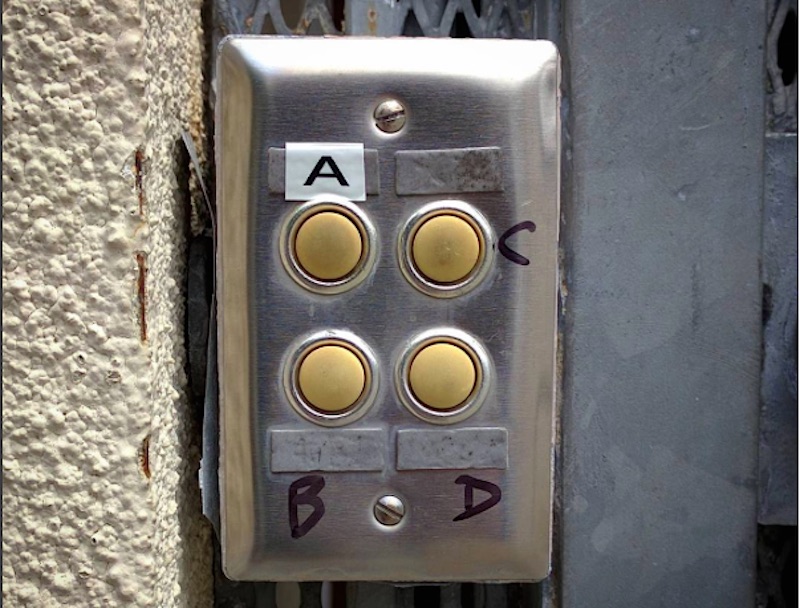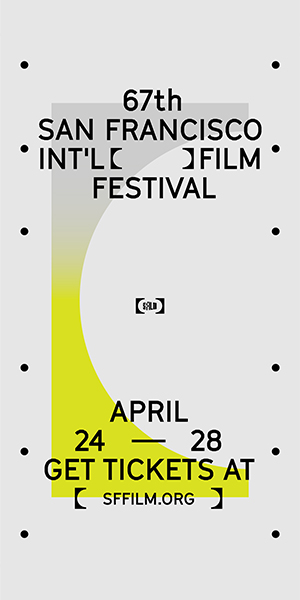ALL EARS Bay Area experimental music composer and legend Pauline Oliveros, who passed away last Thursday, once described her famous Deep Listening practice as seeking to “inspire both trained and untrained performers to practice the art of listening and responding to environmental conditions.”
Extending Deep Listening (and another of Oliveros’ theories, Sonic Awareness) into a culturally informed, laser-attentive meditation on everyday technological encounters, local writer, teacher, and electronic music community organizer Marc Weidenbaum’s latest project looks and listens deeply into the social history, jury-rigged aesthetics, and political implications of SF’s doorbells — an instantly recognizable yet overlooked class of appliances we all find ourselves fumbling with.
Weidenbaum, whose incredible sonic diary disquiet.com was one of the first blogs on the Internet and whose recent 33 1/3 book on seminal Aphex Twin album Selected Ambient Works Vol. II met wide acclaim, is giving a talk Thu/1 at Oakland’s Futuredraft called, naturally, “For Whom the Doorbell Tolls.”
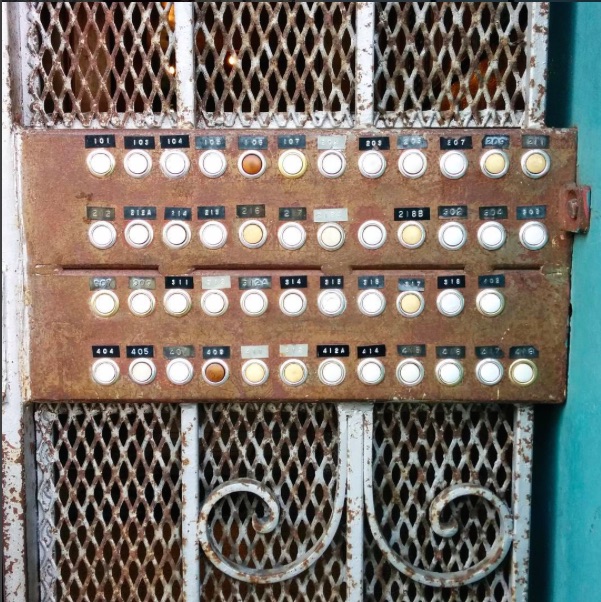
Taking a special interest in “the look of sound,” Weidenbaum has been posting his photographs of local doorbells, among other curious objects, for several years on his disquiet Instagram account. In Thursday’s talk, he’ll “discuss the intercom’s development in Japan, the rise of the domestic surveillance apparatus, the consumer-product soundscape of everyday life — and, ultimately, what lessons the humble, ubiquitous doorbell provides in regard to the Internet of Things, the smart home, and the role of sound in user interfaces.” He also brings up questions that will ring a bell in all of us, like “How long until you ring again?”
I talked to Weidenbaum via email about how such a tiny buzzer can cause enormous cultural reverberations.
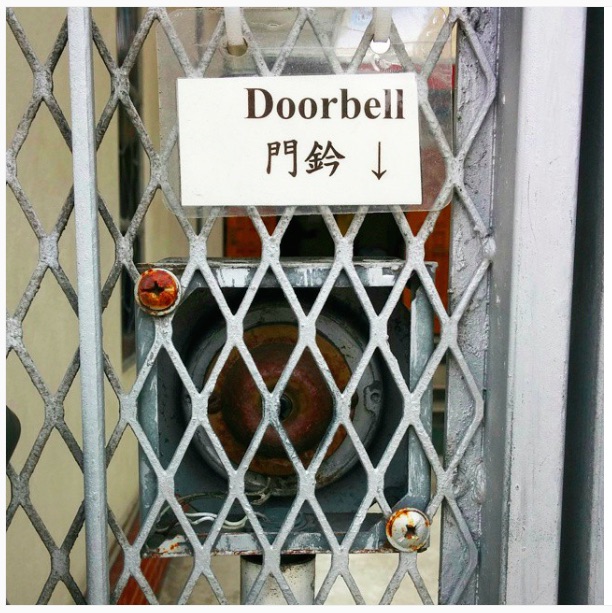
48H You’ve been photographing and posting doorbells from around SF for how long now? What are some of the curious things you’ve noticed?
MARC WEIDENBAUM I looked back and found that my first doorbell shot on Instagram (/dsqt) was April 25, 2012. Previous to that I’d been focusing on images that looked like speakers but weren’t speakers, such as circular drains and air vents. The caption to that first doorbell photo is, presciently, “Warning: increasingly smitten with intercoms and doorbells.”
Disrepair is at the top of the list. I don’t need to go looking for the broken doorbells that largely populate my Instagram account. They’re everywhere. Doorbells are in all states of shoddy shape, from being outright broken, with the wires hanging out, to being repaired in a manner that looks like it was a quick fix, but then a decade or three passed. I’m amazed, as well, by the poor user experience of almost all multi-unit dwellings, from inconsistent ordering of buttons to clumsy menu-driven apparatuses. A close second to the widespread disrepair are situations where there’s a sign with the word “doorbell” and an arrow pointing to the doorbell. If a doorbell isn’t clearly a doorbell, then whose fault is it? The doorbell manufacturer, the developer, the general contractor, the landlord, humans in general?
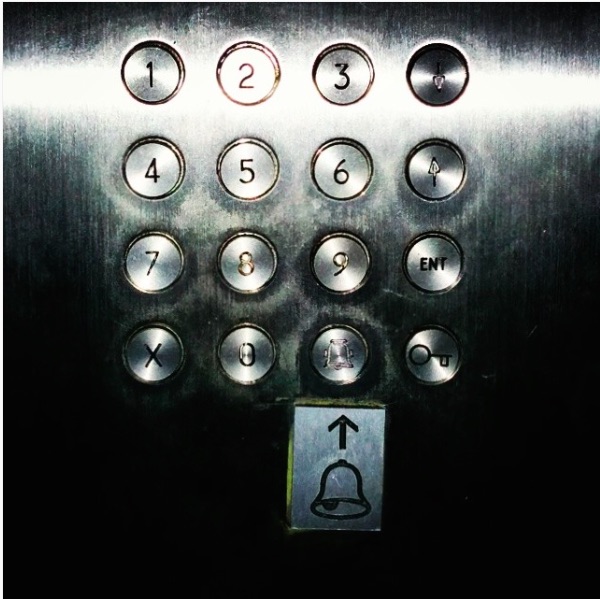
48 HILLS Describe your very first encounter with a doorbell that sparked such an interest.
MW It’s not a specific geolocated-temporal memory, but I can piece together the circumstances that led to it. It happened while I was wandering around my neighborhood, the Richmond District. I spent 20-odd years working at a desk — various desks, that is, at various large companies. Shortly before my kid was born I quit full-time employment, and then slowly built up a freelance operation that balanced well with being a parent. I was out and about a lot with the stroller, and then after daycare kicked in I was out and about a lot because I could be, because I was no longer tied to a desk. That has been great for various reasons, a key one being that my single greatest addiction may be walking.
Meanwhile, I’ve long had an interest in how we represent sound visually, and that is always in the back of my mind. I edited comics about music for over a decade — primarily in Pulse! magazine, long ago the house publication of Tower Records — and I teach a course at the Academy of Art about the role of sound in the media landscape. In class I have my students do an exercise where they take photographs of things that “signify” sound, which leads to a discussion about the distinction between signifying sound and having an association with sound — why, for example, a megaphone or speaker symbol makes sense on a computer keyboard and a bell on a phone or in an elevator.
At some point I came to focus on doorbells as unique musical gadgets, as everyday pushbutton objects. I didn’t intend to peer deeply into them. I just started taking pictures, and then thinking about the pictures, and then writing about the pictures, and then researching deeper and further.

48H What are some highlights you’ve come across from the development and cultural history of doorbells?
MW There’s a pretty direct regal vibe connection, at least in Western culture, from the horns resounding in castle turrets to the retro-simulated grandfather-clock dong of many contemporary doorbells. That continuity of pageantry defines the home — no matter its size, from studio apartment to McMansion — as a castle. That isn’t merely a metaphor. It’s built into American law as the “castle doctrine,” which has come to the fore in recent years due to its connection to “stand your ground” lawsuits.
Anyhow, among the major highlights in the history of doorbells are the move from door knockers to bells to electric doorbells, the introduction of intercoms and video, and the so-called Internet of Things, bringing us up to the present. I’d add text messaging to that list, as it just may do away with doorbells entirely. I’d fold in, on the cultural side, door-to-door salespeople, religious missionaries, political canvassers, and, more recently, the on-demand economy, which is a subset of or corollary to what is called the gig economy or, generously, the sharing economy.
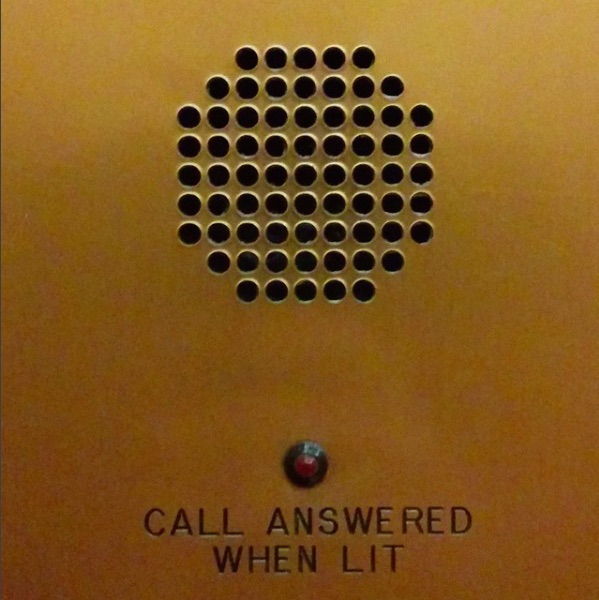
48H In your Thu/1 talk, you’ll be connecting the doorbell to methods of surveillance and the ambient sound of consumer capitalism — can you talk a little about that?
MW Sure thing. On the surveillance side, we’re well through the looking glass in terms of entering a new world where there is ubiquitous technology capable of listening to us and taking our pictures. You know how in many versions of the vampire legend it’s a rule that the vampire can’t enter your home unless invited by the inhabitant? We have welcomed surveillance into our homes, eagerly, sometimes in the name of convenience, often simply out of novelty, rarely with an awareness for the sheer pervasiveness of the technology — all those “always on” devices that let us ask questions, the proliferation of microphones, of voice-enabled technologies.
The consequences as to what that means for privacy is yet to unfold, yet to be taken stock of. However, the doorbell is a useful harbinger, a canary in the panopticon coal mine. The major recent advances in doorbells have been almost entirely about domestic surveillance, about having a camera, for example, that takes a photo or activates a video camera every time the doorbell is rung. What, I wonder, does it mean that the bell intended to welcome someone into your home automatically treats them as a suspect? One thing’s for certain: we’re currently more suspicious of our visitors than we are of our technology.
As for the consumer-appliance soundscape, and the doorbell’s role in it, there are a lot of ways to look at the situation. Proliferation provides a useful vantage. Give thought to how many beeps there are in a home today with all modern conveniences, versus 20 years ago: not just the doorbell and the alarm clock, but the cellphone, the dryer, the dishwasher, the alert from the fridge that you left the freezer door open, the voice-enabled AI bot on your dining room table, the whir of your DVR, the pinging of cellphone alerts, and so forth. That is the low-level ambient cacophony through which the doorbell might be heard.
The doorbell was, once upon a time, pretty much alone with the telephone as a way that an individual outside your home caused sound in your home, putting aside things like TV and radio, which inhabit a different category. Today our homes are beacons of communication. They’re both more secure and more porous. The ancient doorbell has to navigate this new normal. When it’s easier just to text someone from the car or from down the block as you approach the front door, I sometimes wonder if the doorbell as we’ve known it has much of a future.
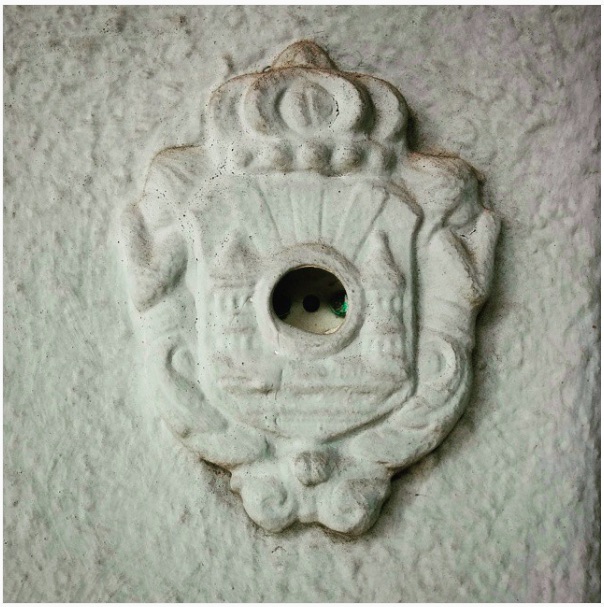
48H What is your doorbell?
MW I kind of have two doorbells. The building I live in was built in the early 1920s, out in the Richmond District, the same year as the Legion of Honor, though my home is a tad more humble. Next to the front door is a somewhat regal-looking doorbell, except it doesn’t work. The button is missing. By the time I moved into the place, in late 2008, there was a gate at the front of the house, across a postage-stamp-sized tile porch from the front door. I don’t know when the gate was installed, but there it is. They’re on so many buildings in the city, buildings that were initially not designed to have gates.
Anyhow, there’s a functioning doorbell on the gate itself, just a little white button in the black iron. It’s funny we call that thing the “doorbell,” when the real bell is, of course, inside the house, in my case above the entryway to the kitchen. The bell is loud. Even when I know someone is dropping by, the hair goes up on my arms when the thing is rung when they hit that button. Sometimes I jump out of my seat. I think there’s a reason it’s difficult to get a truly “pleasant” doorbell sound, which is that even in the best of circumstances, the bell ringing is an annoyance.
“FOR WHOM THE DOORBELL TOLLS”
Thu/1, 6pm, free
Futuredraft, Oakland
More info here.



